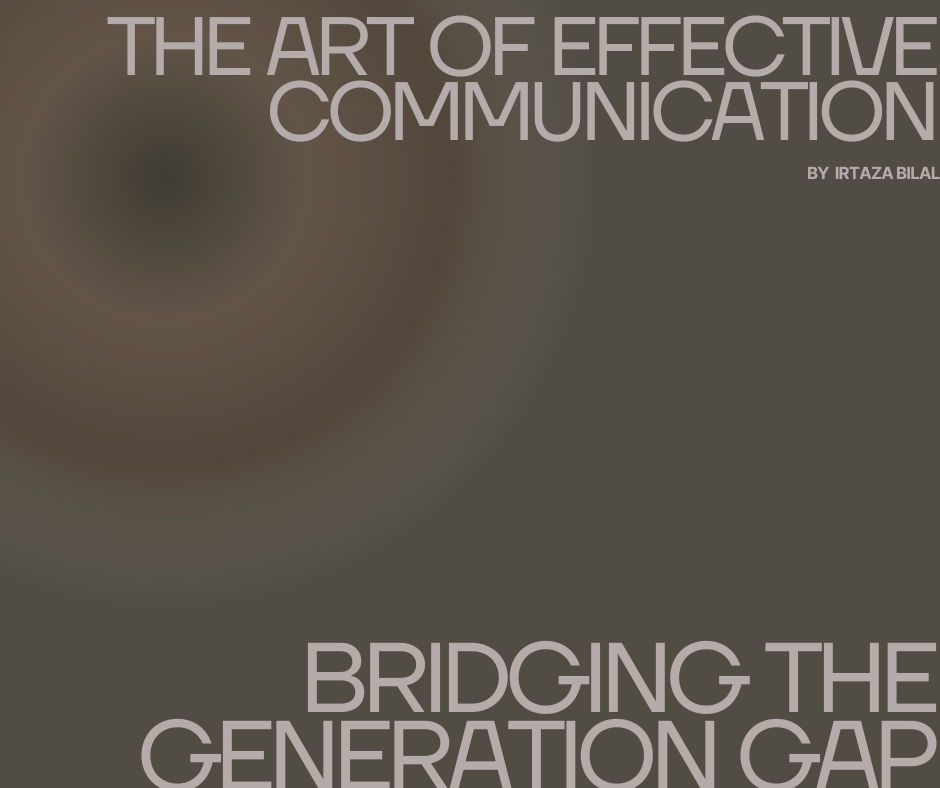In today’s diverse world, effective communication plays a pivotal role in connecting individuals of different generations. Each generation brings unique perspectives, experiences, and communication styles, which can sometimes create barriers to understanding. However, by mastering the art of effective communication, we can bridge the generation gap and foster meaningful connections. In this blog, we will explore strategies and techniques for enhancing communication across generations.
- Understanding Generational Differences: To effectively bridge the generation gap, it is crucial to understand the characteristics and values that define each generation. From Baby Boomers to Generation Z, every generation has distinct communication preferences shaped by their upbringing, societal influences, and technological advancements. By gaining insight into these differences, we can adapt our communication styles accordingly.
- Active Listening: One of the fundamental elements of effective communication is active listening. This involves being fully present in conversations, showing genuine interest, and focusing on understanding the speaker’s perspective. Regardless of age, active listening creates a sense of respect and validation, fostering open and meaningful dialogue.
- Adaptability and Flexibility: To bridge the generation gap, it’s important to be adaptable and flexible in our communication approach. Different generations may have varying preferences for communication channels, such as face-to-face conversations, phone calls, emails, or social media. By being open to different methods and adapting our communication style, we can meet individuals where they are comfortable and create a conducive environment for effective interaction.
- Clear and Concise Communication: Clarity is key when communicating across generations. It’s essential to express ideas in a straightforward and concise manner, avoiding jargon or complex language that may confuse or alienate certain age groups. By using simple and inclusive language, we can ensure our message is understood and resonates with a diverse audience.
- Empathy and Perspective-Taking: Empathy is a powerful tool in bridging the generation gap. By putting ourselves in others’ shoes and understanding their unique experiences, we can cultivate a deeper understanding and connection. Recognizing that different generations have faced distinct challenges and societal shifts allows us to communicate with empathy, fostering mutual respect and appreciation.
- Embracing Intergenerational Learning: Intergenerational learning offers a valuable opportunity for knowledge exchange and mutual growth. Younger generations can benefit from the wisdom and experience of older individuals, while elders can learn from the fresh perspectives and insights of the youth. Creating spaces for intergenerational collaboration and dialogue helps break down barriers and enhances communication between generations.
- Overcoming Stereotypes and Preconceptions: Stereotypes and preconceptions can hinder effective communication between generations. It’s essential to challenge these assumptions and approach conversations with an open mind. By recognizing individuals as unique beings, rather than solely defined by their generation, we can foster deeper connections and build bridges across generational divides.
Conclusion: The art of effective communication allows us to bridge the generation gap, fostering understanding, empathy, and connection. By actively listening, adapting our communication styles, practicing empathy, and embracing intergenerational learning, we can overcome barriers and create meaningful dialogues with individuals of all ages. Let us strive to build bridges of communication that span generations, enriching our lives and society as a whole.

